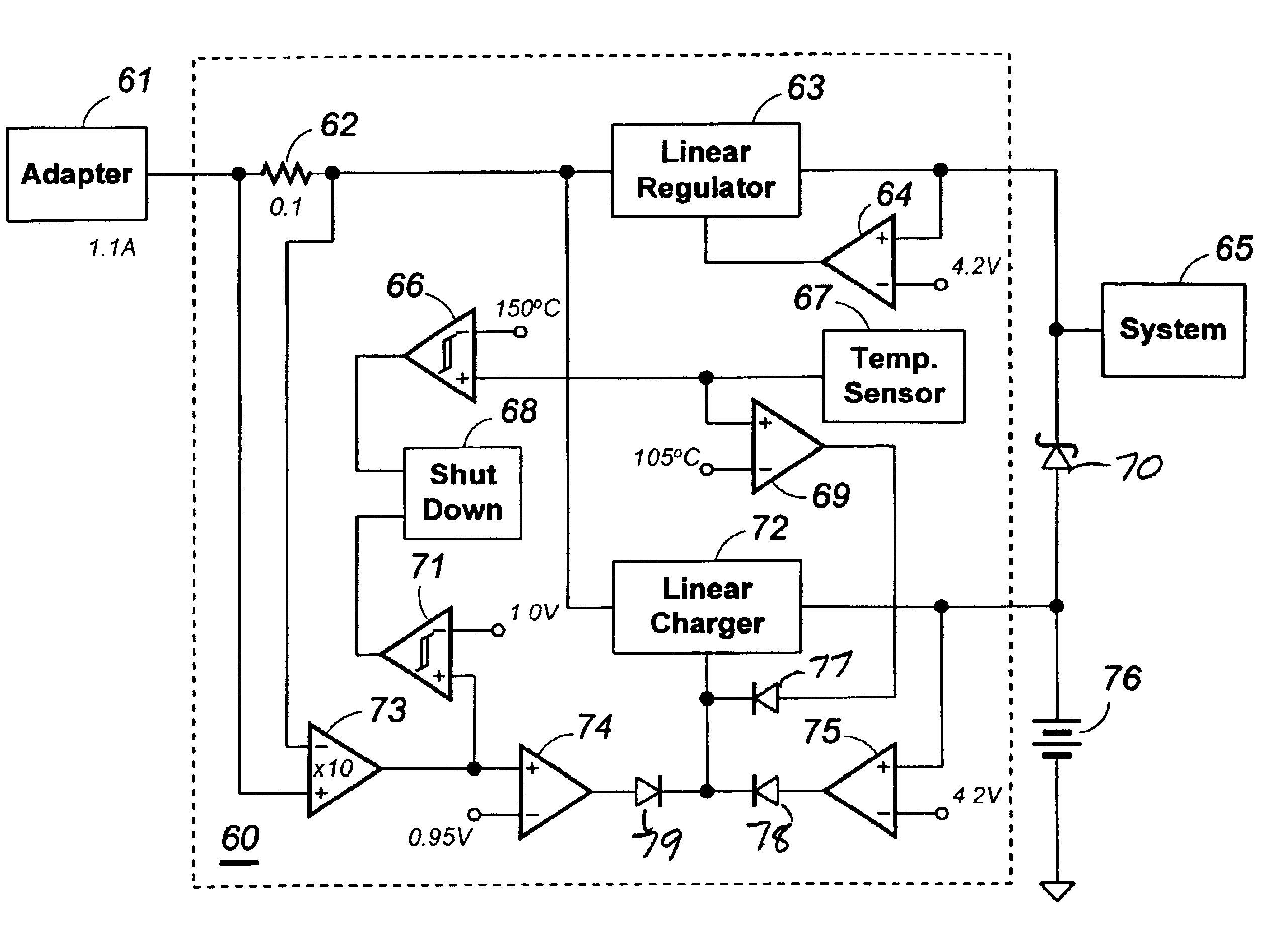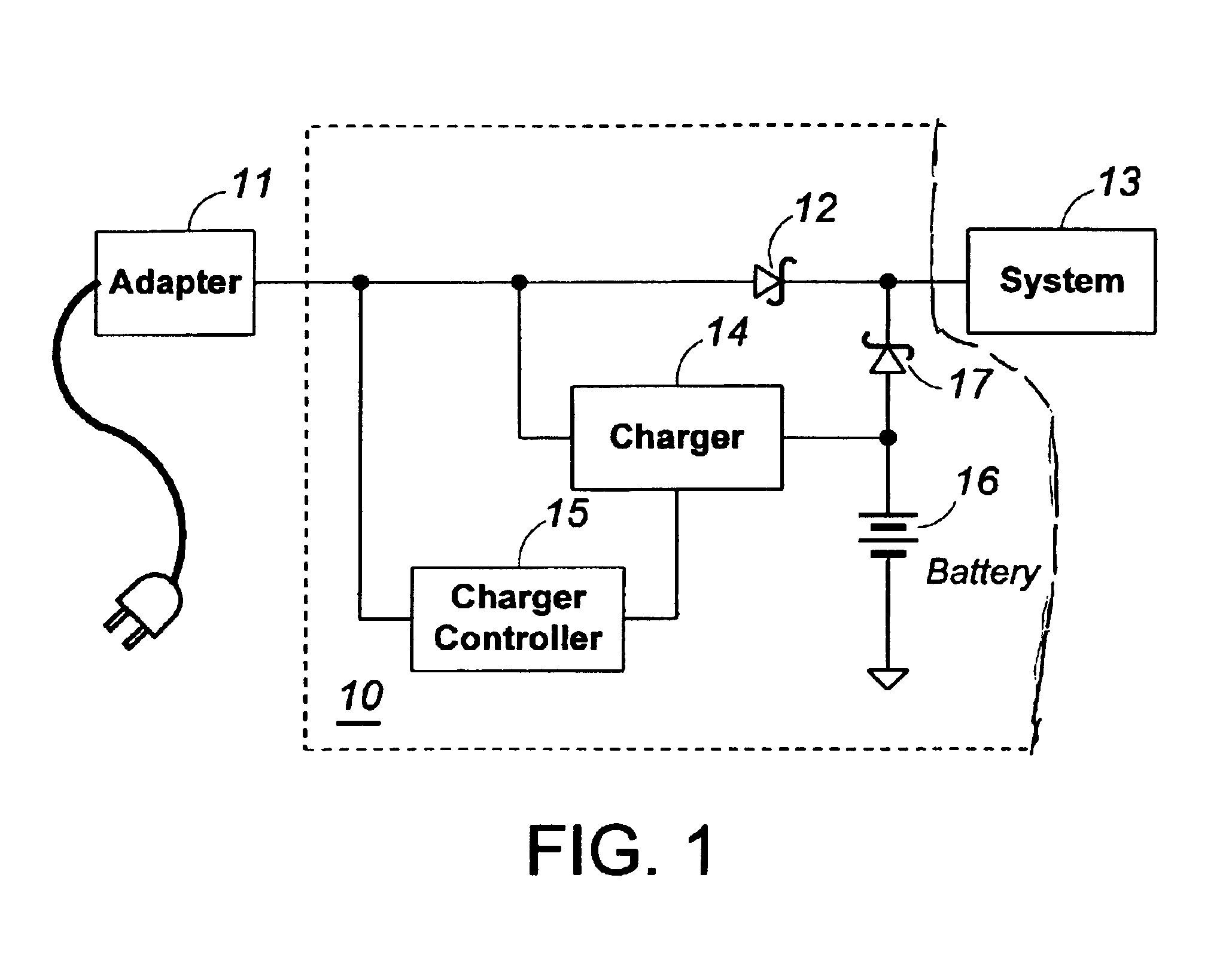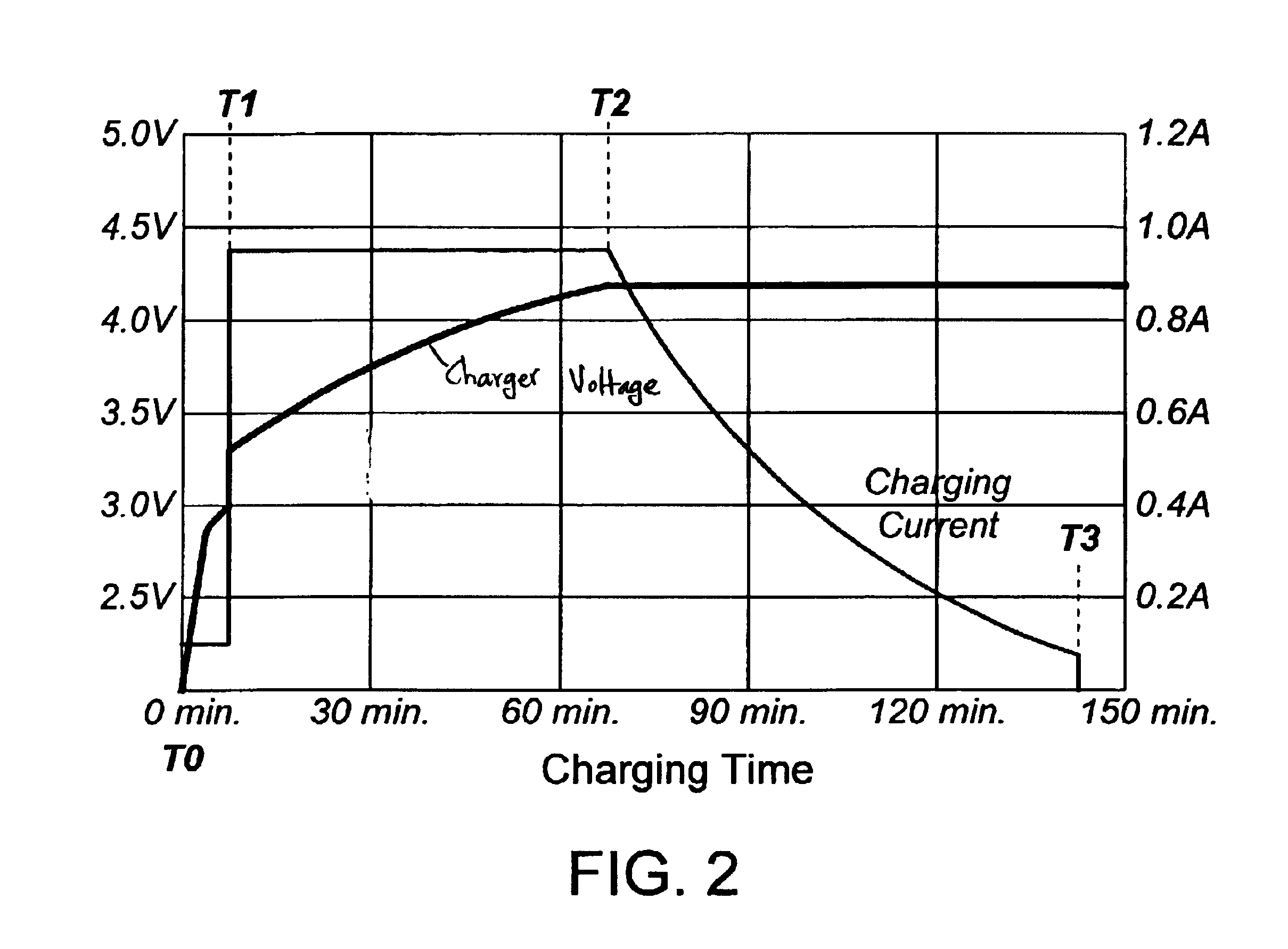Charger system with dual-level current regulation and dual-level thermal regulation
a charging system and current regulation technology, applied in electric vehicles, electric power, transportation and packaging, etc., can solve the problems of single package unit limited power dissipation capability, serious problem, and main system shutdown, and achieve the effect of increasing the overall efficiency of the adapter-charger system
- Summary
- Abstract
- Description
- Claims
- Application Information
AI Technical Summary
Benefits of technology
Problems solved by technology
Method used
Image
Examples
Embodiment Construction
In many portable electronic devices, further integration of power management functions into an adapter-charger system is required. For example, Schottky diodes 12 and 17, shown in FIG. 1, may need to be replaced by power MOSFETs to achieve higher efficiency and reduced heat dissipation. A power MOSFET may be used for either or both of the Schottky diodes 12, 17.
FIG. 5 shows a charging circuit with a power MOSFET that replaces a pass diode of the prior art. In FIG. 5, power MOSFET 52 replaces the pass-through Schottky diode 12 of FIG. 1. Power MOSFET 52 supplies the current required for running the system when adapter 51 is connected to a power source and to the charging system 50. Because power MOSFET 52 resides on the same substrate as linear charger 54, both contribute heat dissipation to charger system 50. In other words, the temperature rise of charger system 50 derives from two sources. Furthermore, control circuit 55 now must provide thermal limit protection to prevent linear ...
PUM
 Login to View More
Login to View More Abstract
Description
Claims
Application Information
 Login to View More
Login to View More - R&D
- Intellectual Property
- Life Sciences
- Materials
- Tech Scout
- Unparalleled Data Quality
- Higher Quality Content
- 60% Fewer Hallucinations
Browse by: Latest US Patents, China's latest patents, Technical Efficacy Thesaurus, Application Domain, Technology Topic, Popular Technical Reports.
© 2025 PatSnap. All rights reserved.Legal|Privacy policy|Modern Slavery Act Transparency Statement|Sitemap|About US| Contact US: help@patsnap.com



